Fengqing Da Xue Shan (Big Snow Mountain) Raw Pu-erh Cake Tea
$28.80 – $128.00Price range: $28.80 through $128.00
Description
| Origin: | Mengyou & Xueshan Town, Fengqing County, Lincang City, Yunnan Province, China |
|---|---|
| Harvest Date: | April 10, 2021 |
| Production Date | May 18, 2021 |
| Plucking Standard: | One bud with one or two leaves |
| Net Weight | 357g |
| Dry Leaf: | Round and smooth cake, well-shaped, it darkens in color with a scattering of red-colored tea leaves,
fat tea leaves with lots of white hairs on the surface and inside the cake. |
| Aroma: | Rich woody aroma |
| Liquor: | Golden bright in color |
| Taste: | The aroma hints of orchid flower and wild flavor; it tastes smooth, soft, and slightly bitter but
quickly turns to sweet; its long-lasting fragrance will entirely cross your upper and lower jaws, producing a copious secretion of saliva. |
| Tea Bush: | Fengqing large-leaf species (100-300 years old) |
| Tea Garden: | Lida & Xueshan tea garden (at an average altitude of over 1,800m above the sea level) |
| Caffeine: | Moderate caffeine (less than 20% of a cup of coffee) |
| Storage: | Store in cool, dry place away from sunlight; keep ventilated |
| Shelf Life: | The aged the better |
 |
Cup Method |
 |
Chinese Gongfu Method |
 |
Teacup: 12oz / 355ml |  |
Gaiwan: 3.8oz / 110ml |
 |
203℉ / 95℃ |  |
203℉ / 95℃ |
 |
5g Tea |  |
8g Tea |
 |
Brewing time: 3 – 5 mins |  |
12 steeps: rinse, 15s, 15s, 20s, 25s, 30s, 35s, 40s, 60s, 80s, 100s, 150s, 200s |

Mengyou and Xueshan towns are located in Fengqing County, Lincang City, Yunnan province. With an average elevation higher than 2km above sea level, this area is blanketed with many large-leaf ancient tea trees. At these heights trees tend to grow more slowly, but produce tea of noticeably higher quality – which in turn leads to the saying that “good tea come from high mountains”. The trees here are nourished by the beautiful Lancang River, giving the trees a finer texture and thick taste, rich in water-soluble extractives that can be coaxed out of the leaves over many infusions. Along with this, pu-erh teas from this region feature a smoother taste and long-lasting fragrance.
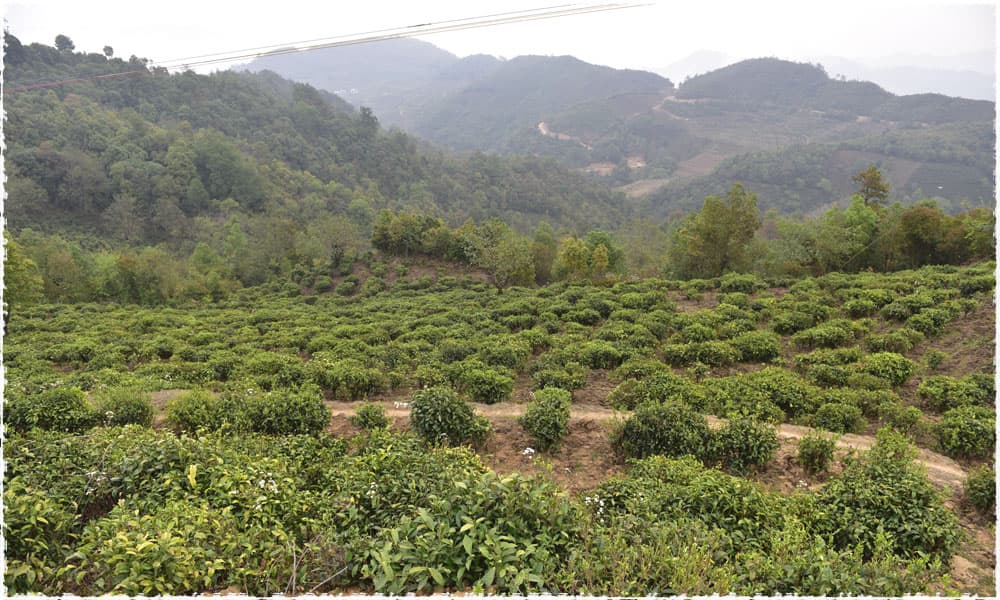
This raw pu-erh cake comes from the representative pu-erh production area, Fengqing, located in the southern part of the Dianxi Longitudinal Valley. Fencing is a country in the northwestern area of Lincang, one of the four famous pu-erh production regions (with the others being Xishuangbanna, Pu’er, and Baoshan), and is one of the original tea-producing regions in the world. It is also famous as the hometown of Yunnan black tea, with a long history of planting, producing, and drinking tea, and features a throng of mountains webbed with beautiful rivers.
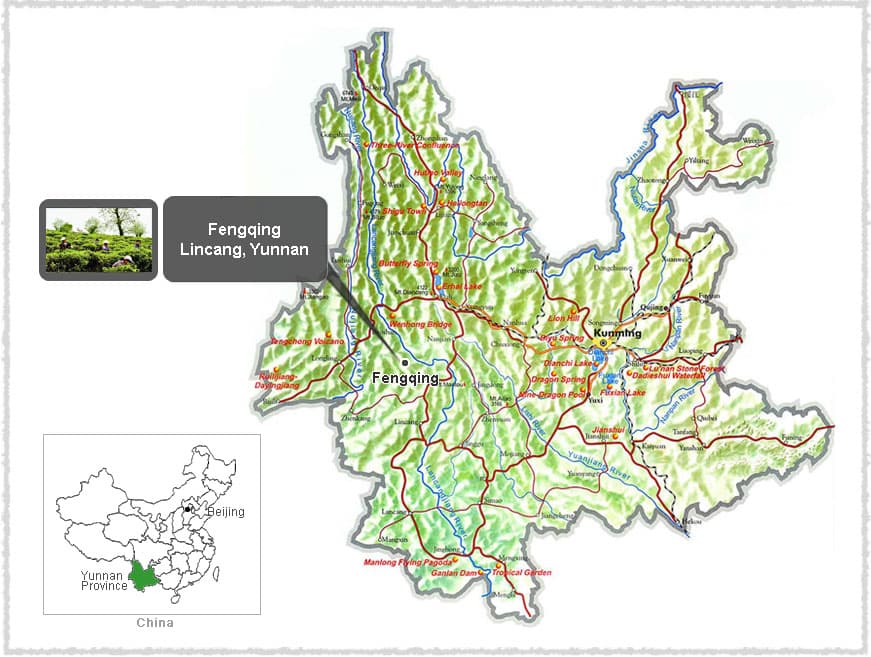
This pu-erh tea is made from the Fengqing large-leaf varietal, belonging to the Yunnan large-leaf species. This particular plant can grow to over six meters tall. In 1984 it was certified by the Chinese government as national-grade, and contains an abundant amount of tea polyphenol and catechin: 30.2% and 13.4%, respectively.
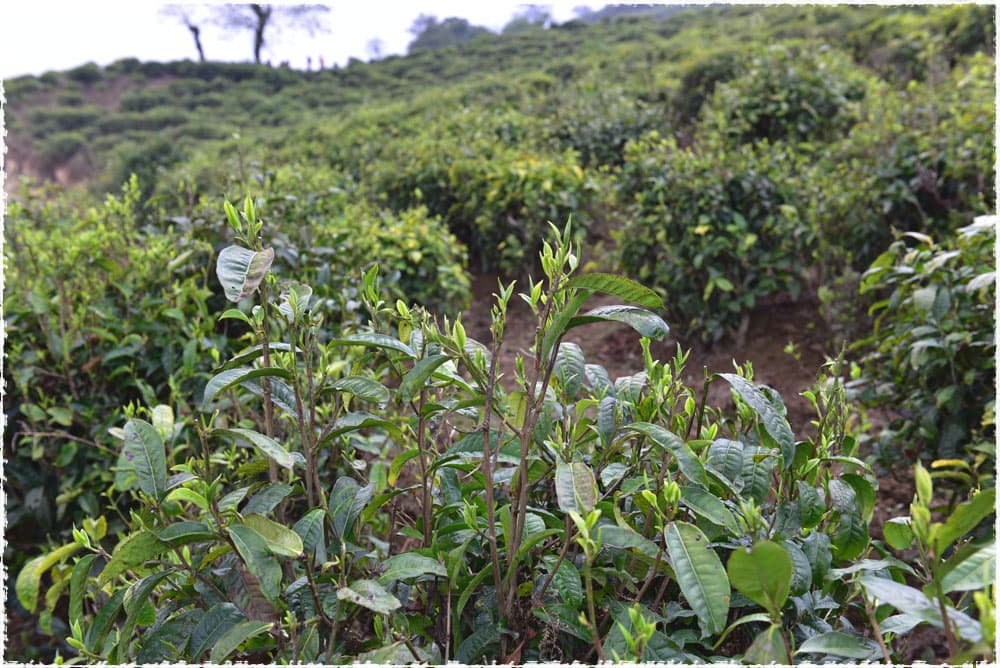
Pu-erh tea is one of the oldest types of tea in China, with a history stretching back over 1,700 years to the Eastern Han Dynasty, when the tea was called Jing Cha. Pu-erh is named after the town of Pu’er in Yunnan province, which was the original trading center of this tea. In its early history, this tea was actually used as bartering currency in southwest China, where the famed Cha Ma Gu Dao, “Tea Horse Road”, was built for the sole purpose of transporting it through the Himalayas to other countries and areas in Tibet.
Additional information
| quantity | one, two, three, four, five |
|---|
Related Products
Related products
-
Sale!

100% organic herbal Bowel cleansing tea 3 boxes
$159.00Original price was: $159.00.$99.90Current price is: $99.90. Add to cart -
Sale!

Fengqing Ancient Tree Spring Chun Jian Raw Pu-erh Cake Tea 2012
$45.00 – $198.90Price range: $45.00 through $198.90 Select options This product has multiple variants. The options may be chosen on the product page -
Sale!
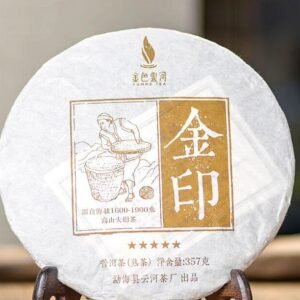
Menghai Golden Buds Palace Ripened Pu-erh Cake Tea 2012
$64.90 – $299.00Price range: $64.90 through $299.00 Select options This product has multiple variants. The options may be chosen on the product page -
Sale!
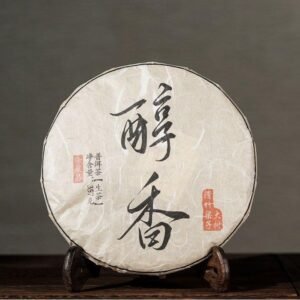
Hua Zhu Liang Zi Raw Pu-erh Cake Tea
$59.00 – $249.00Price range: $59.00 through $249.00 Select options This product has multiple variants. The options may be chosen on the product page
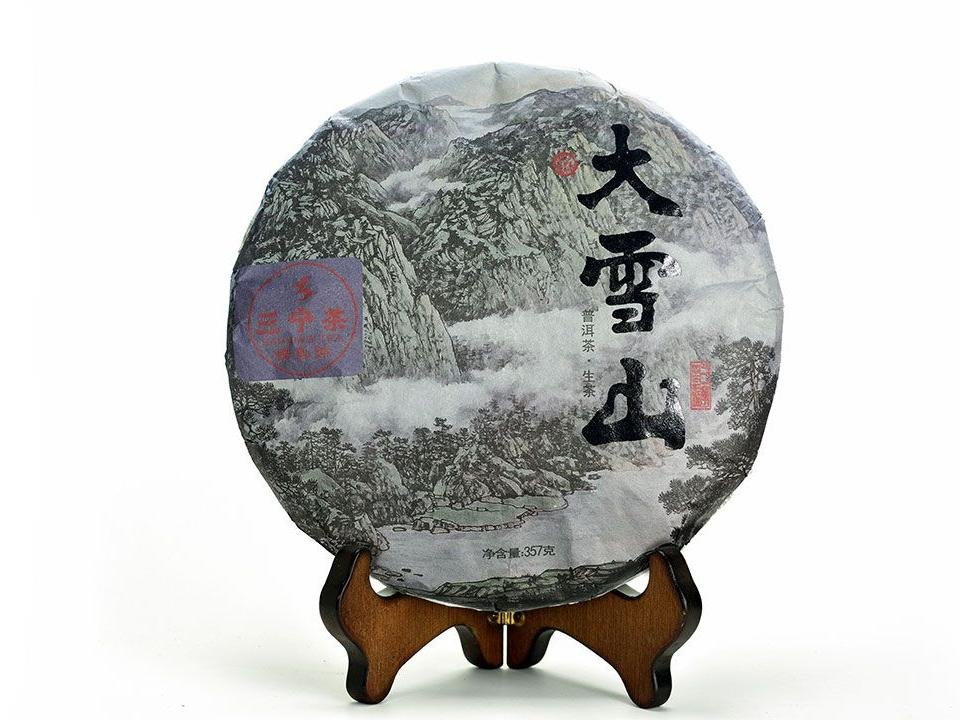

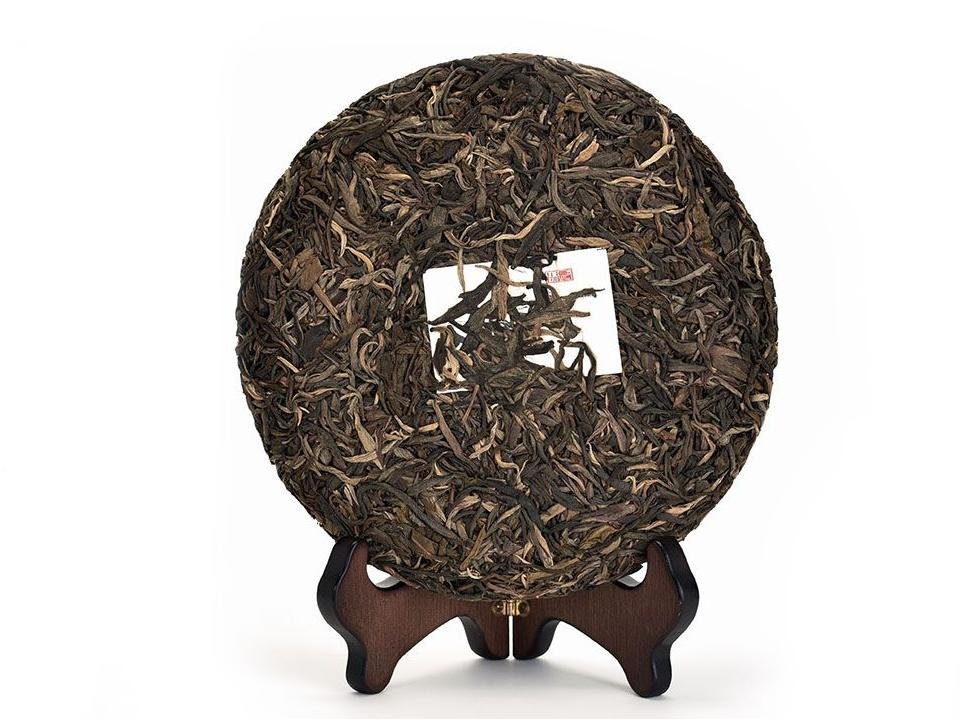
Reviews
There are no reviews yet.